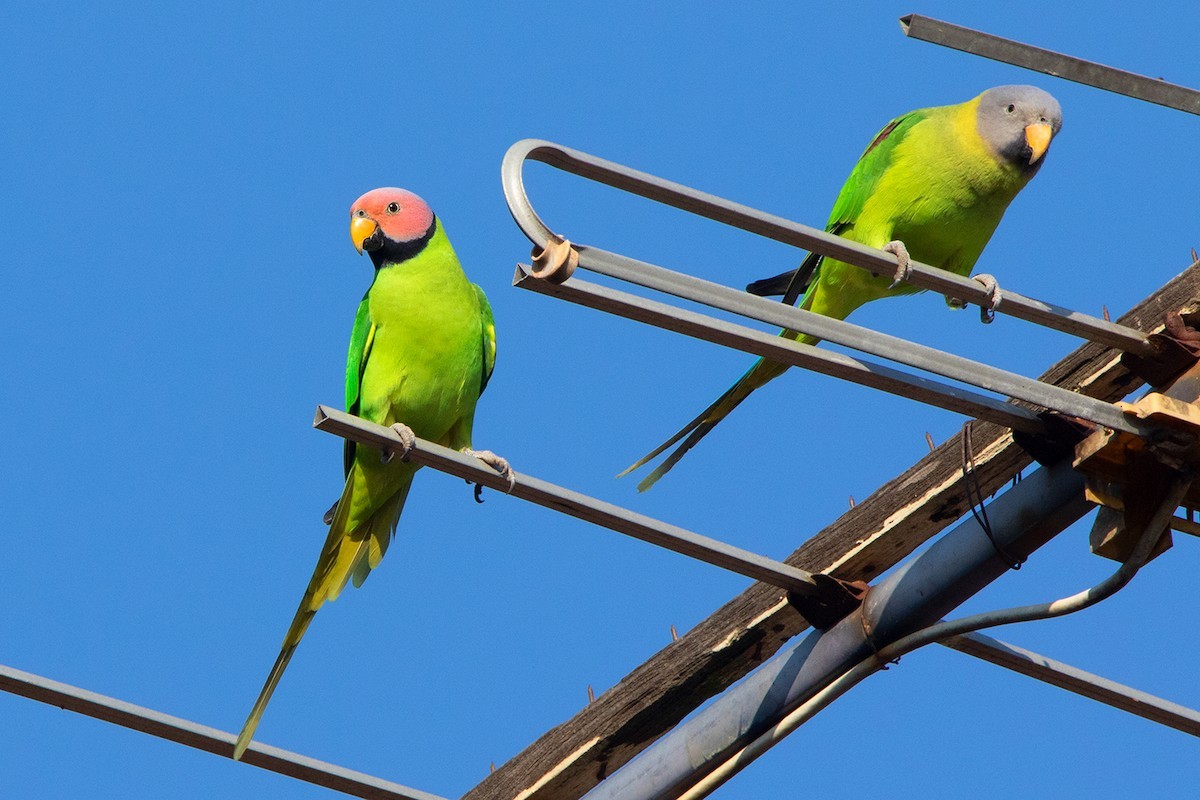Blossom-headed Parakeet
A species of Ring-necked Parakeets Scientific name : Psittacula roseata Genus : Ring-necked Parakeets
Blossom-headed Parakeet, A species of Ring-necked Parakeets
Botanical name: Psittacula roseata
Genus: Ring-necked Parakeets
Content
Description General Info
 Photo By Ayuwat Jearwattanakanok
Photo By Ayuwat Jearwattanakanok Description
The blossom-headed parakeet (Psittacula roseata) is a parrot which is a resident breeder in Eastern Bangladesh, Bhutan, Northeast India and Nepal, eastwards into South-east Asia (Cambodia, Laos, Myanmar, Thailand and Viet Nam) and also China. It undergoes local movements, driven mainly by the availability of the fruit and blossoms which make up its diet. It has two subspecies, nominate and juneae Blossom-headed parakeet is a bird of forest and open woodland. It nests in holes in trees, laying 4-5 white eggs. This is a green parrot, 30 cm long with a tail up to 18 cm. The male's head is pink becoming pale blue on the back of the crown, nape and cheeks. There is a narrow black neck collar and a black chin stripe. There is a red shoulder patch and the rump and tail are bluish-green, the latter tipped yellow. The upper mandible is yellow, and the lower mandible is dark. The female has a pale grey head and lacks the black neck collar and chin stripe patch. The lower mandible is pale. Immature birds have a green head and a grey chin. Both mandibles are yellowish and there is no red shoulder patch. The different head colour and the yellow tip to the tail distinguish this species from the similar plum-headed parakeet (Psittacula cyanocephala). Blossom-headed parakeet is a gregarious and noisy species with range of raucous calls. 
Size
36 cm
Nest Placement
Cavity
Feeding Habits
The diet of blossom-headed Parakeet consists mainly of fruits, nuts, and seeds, sourced through adept foraging in treetops. It exhibits a preference for certain fruits, showcasing its unique dietary adaptation. Feeding mainly occurs at dawn and dusk.
Habitat
The blossom-headed Parakeet typically inhabits well-wooded regions, including open forests and the peripheries of agricultural clearings. These birds favor areas where trees and vegetation provide ample coverage and foraging opportunities, which are characteristic features of their preferred environmental conditions. They are generally found in broader geographical regions that feature such landscapes.
Dite type
Herbivorous
General Info
Feeding Habits
Bird food type

 Photo By Ayuwat Jearwattanakanok
Photo By Ayuwat Jearwattanakanok Scientific Classification
Phylum
Chordates Class
Birds Order
Parrots Family
Parrots Genus
Ring-necked Parakeets Species
Blossom-headed Parakeet